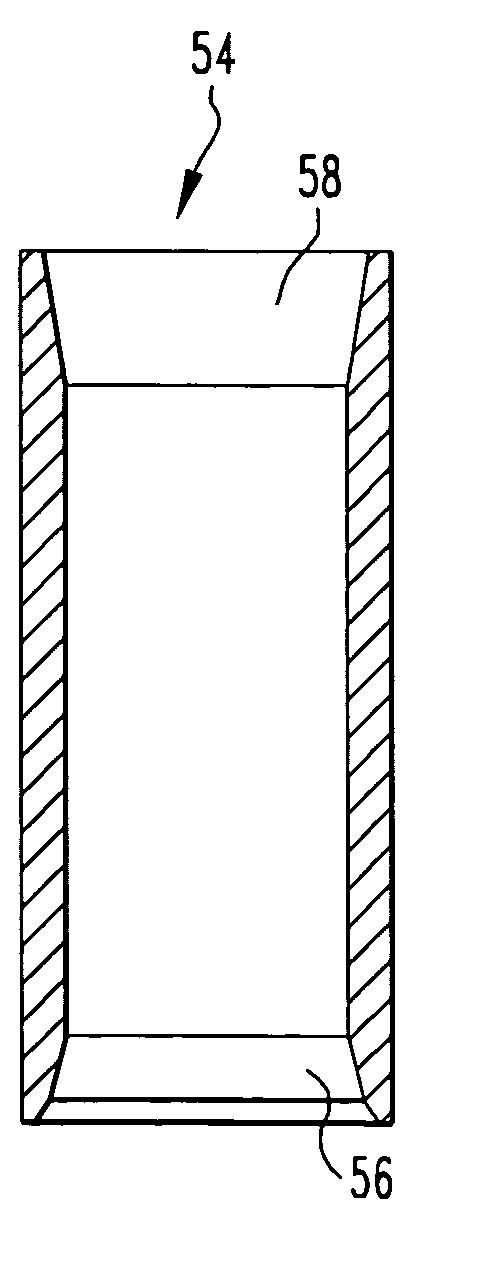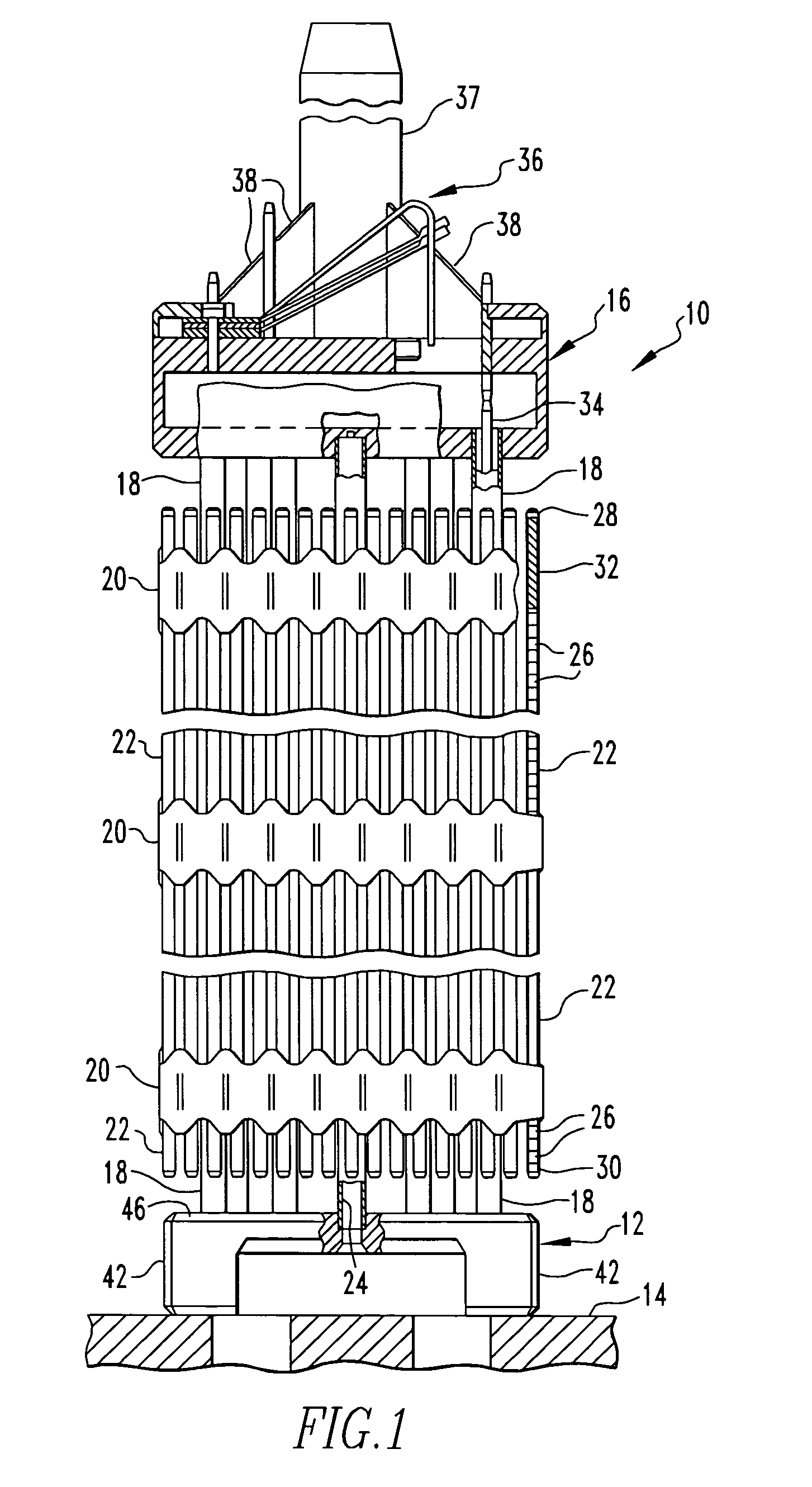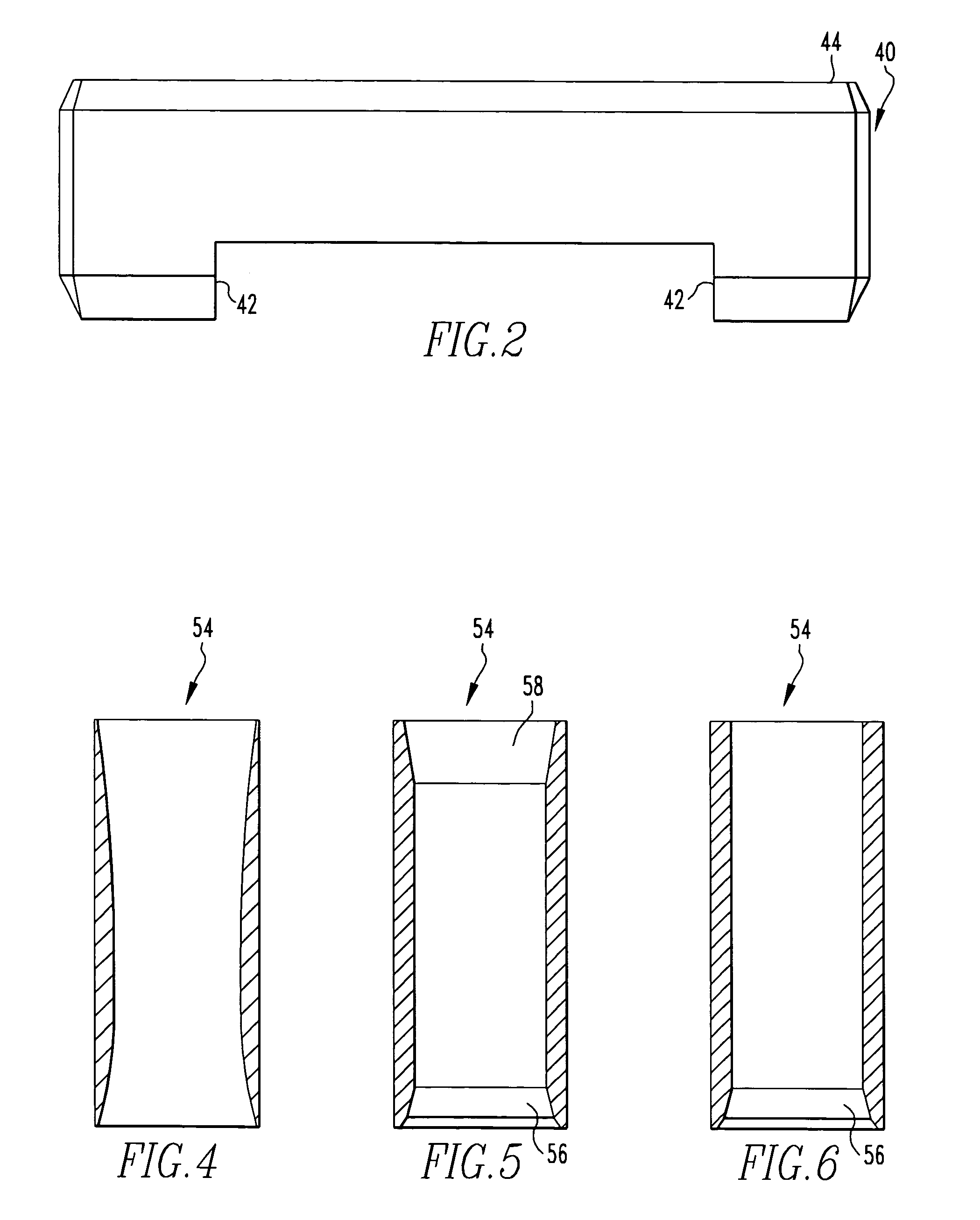Nuclear fuel assembly debris filter bottom nozzle
a technology of fuel assembly and debris filter, which is applied in the field of debris filter bottom nozzle, can solve the problems of fuel assembly damage due to debris, chip and metal particles still remain hidden in the system, and debris tends to lodge in the nozzle, so as to reduce the pressure drop, enhance the manufacturability of this invention, and the effect of reducing the pressure drop
- Summary
- Abstract
- Description
- Claims
- Application Information
AI Technical Summary
Benefits of technology
Problems solved by technology
Method used
Image
Examples
Embodiment Construction
[0018]In the following description, like reference characters designate like or corresponding parts throughout the several views of the drawings. Also in the following description, it is to be understood that such terms as “forward”, “rearward”, “left”, “right”, “upwardly”, “downwardly” and the like are words of convenience and are not to be construed as limiting terms.
Fuel Assembly
[0019]Referring now to the drawings and particularly to FIG. 1, there is shown an elevational view of the fuel assembly, represented in vertically shortened form and being generally designated by reference numeral 10. The fuel assembly 10 is the type used in a pressurized water reactor and has a structural skeleton which, at its lower end, includes the debris filter bottom nozzle 12 of the present invention (which will be described later in detail). The bottom nozzle 12 supports the fuel assembly 10 on a lower core support plate 14 in the core region of the nuclear reactor (not shown). In addition to the ...
PUM
 Login to View More
Login to View More Abstract
Description
Claims
Application Information
 Login to View More
Login to View More - R&D
- Intellectual Property
- Life Sciences
- Materials
- Tech Scout
- Unparalleled Data Quality
- Higher Quality Content
- 60% Fewer Hallucinations
Browse by: Latest US Patents, China's latest patents, Technical Efficacy Thesaurus, Application Domain, Technology Topic, Popular Technical Reports.
© 2025 PatSnap. All rights reserved.Legal|Privacy policy|Modern Slavery Act Transparency Statement|Sitemap|About US| Contact US: help@patsnap.com



